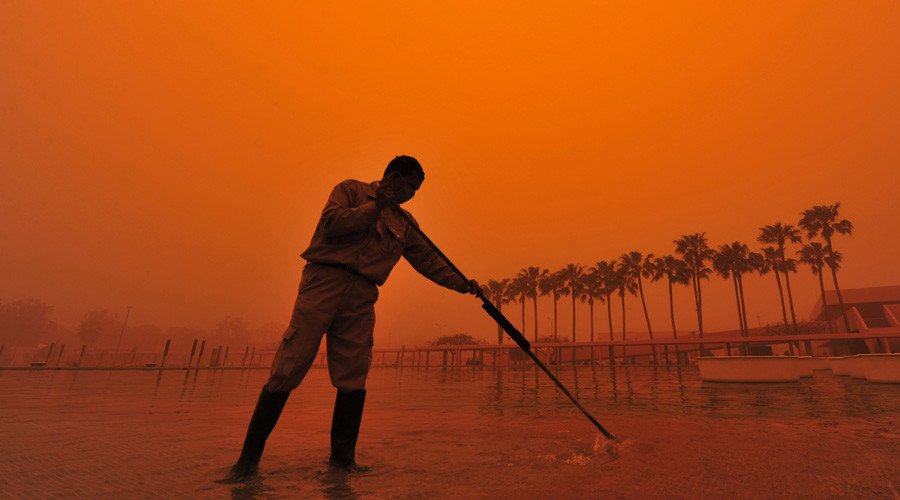Seeing red: Sand storm sweeps across Libyan city (IMAGES)

The port city of Tobruk on Libya’s eastern Mediterranean coast near Egypt has turned red, as a dust storm has smothered the area, according to reports on social media.
Social media users have posted images of the spectacular sight online:
Red dust storm over #Tobruk#Libyapic.twitter.com/ZYU131gZ9U
— Ahmed Sanalla (@ASanalla) January 17, 2016Dust and sand storms are one of the most extreme weather phenomena that affect Libya. Common in the Sahara desert and other arid and semi-arid regions around the world, they are produced when a strong and turbulent wind lifts large quantities of dust or sand into the atmosphere.
Winds of up to 30 miles per hour (48 kph) are forecast for the area tonight and tomorrow with a drop to 17 miles per hour (27 kph) expected on Tuesday.
Such storms are more frequent in Libya between January and June.
#Tobruk right now! pic.twitter.com/6Jmzq2fzDY
— HeMa El-wirshfani (@dr_hom93) January 17, 2016#طبرق اليوم
#Tobruk#today#Sandstorm#orangesky! #Libyapic.twitter.com/siuf7jGIA4
— Gihan Badi (@GihanTadreft) January 17, 2016Red dust storms can increase air pollution to “very high levels” and aggravate breathing problems. Health professionals warn the dust may irritate lungs and cause flare ups in asthma.
Saharan dust, however, can prove beneficial to the environment. Trees and plants in the Amazon Rainforest rely on the nutrient-rich dust, which helps keep the area fertile, according to the New Scientist..

In March of 2013, Libya experienced its most powerful sandstorm in four years.











